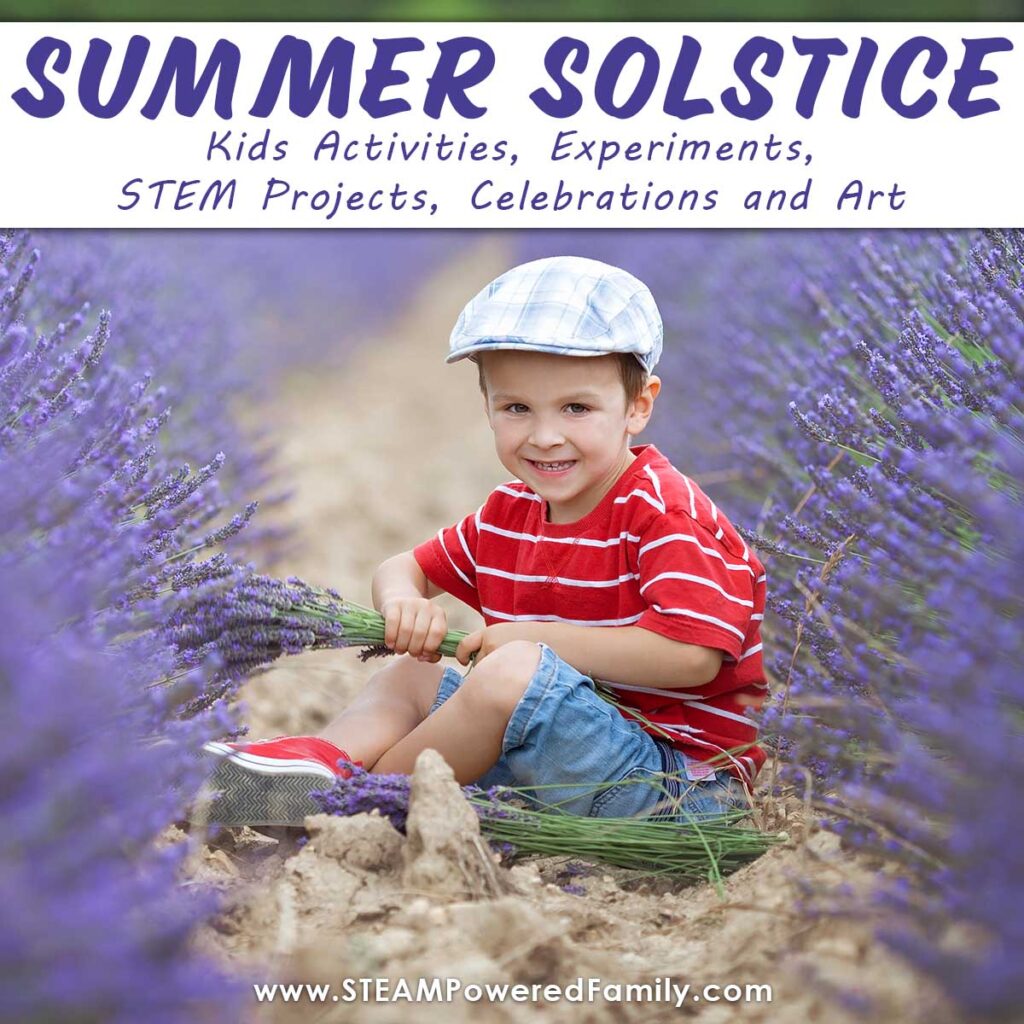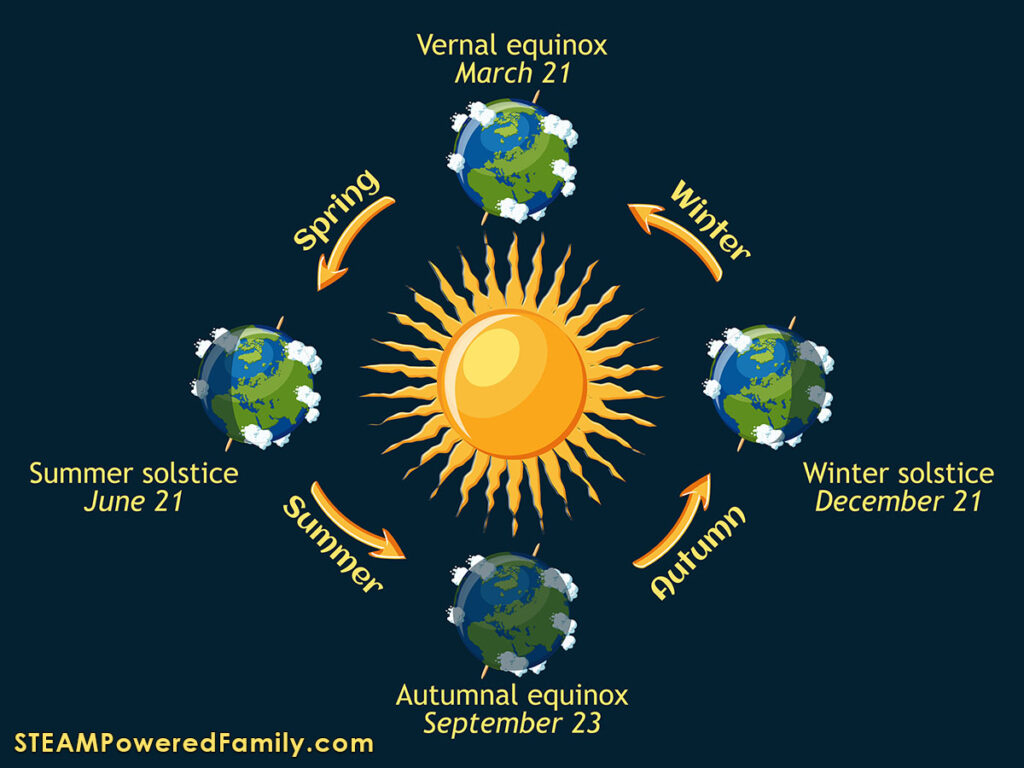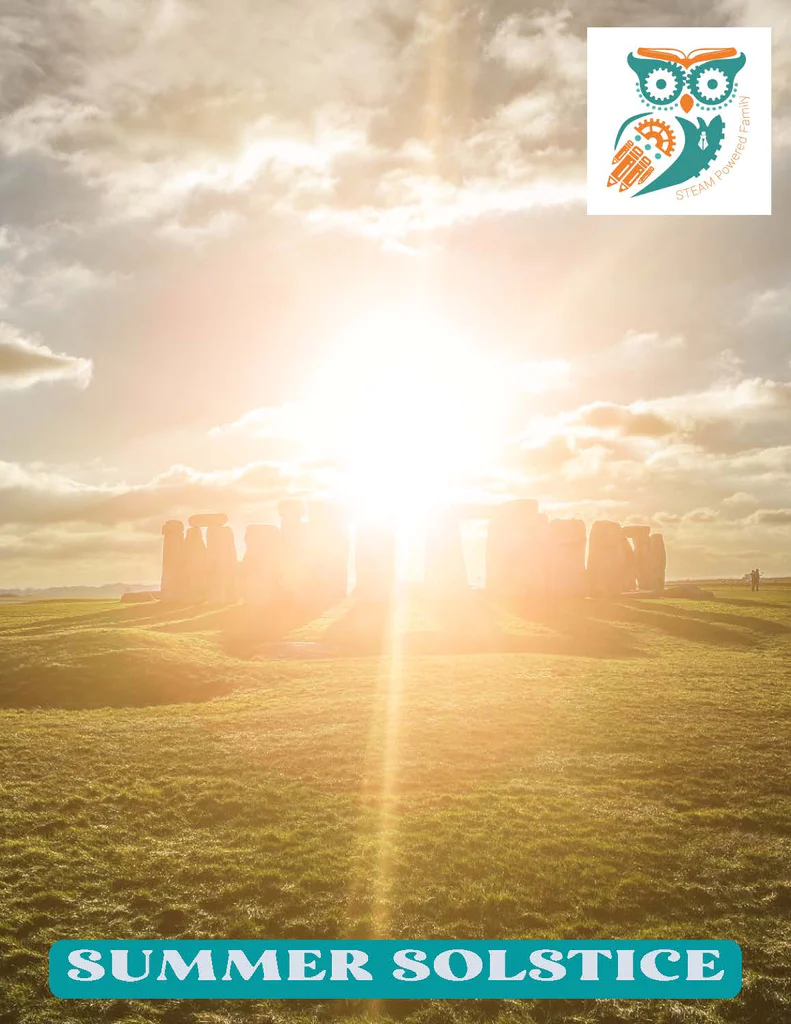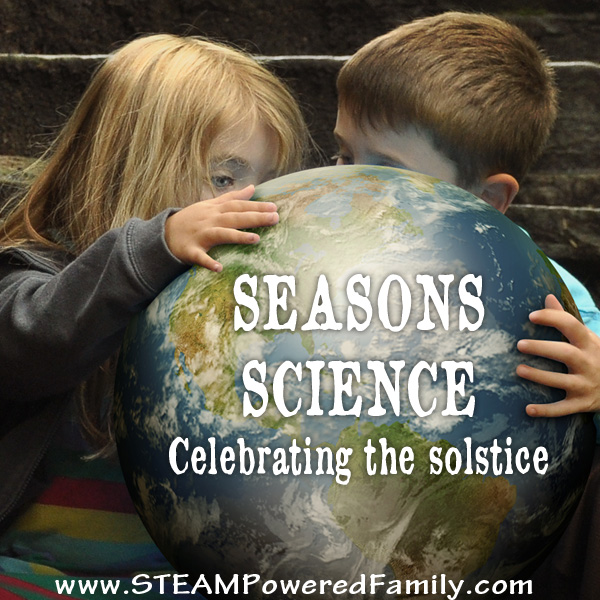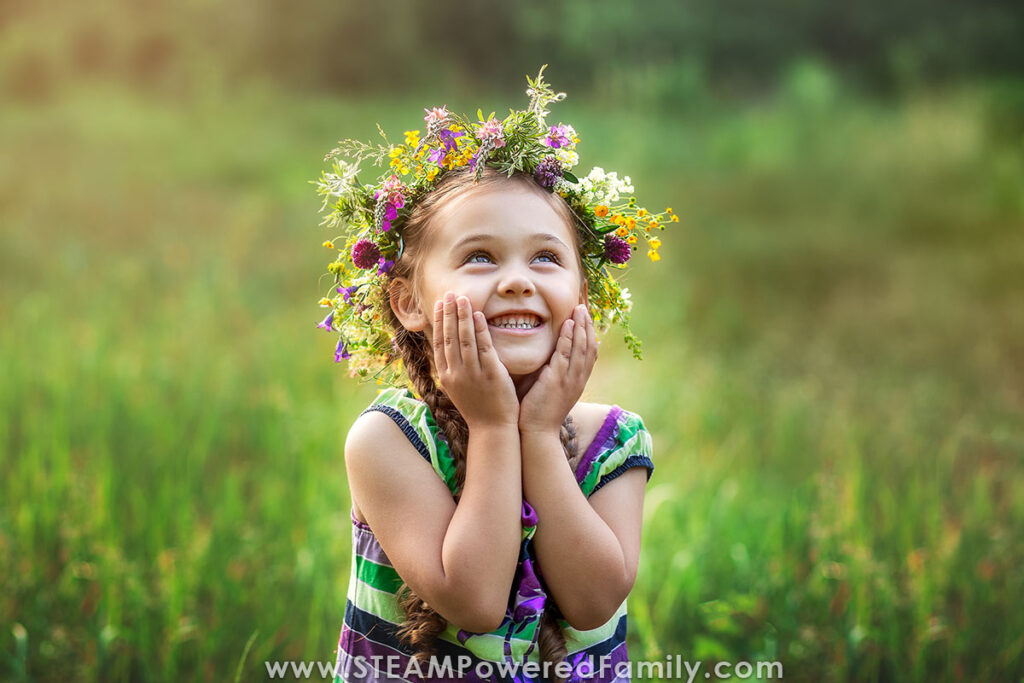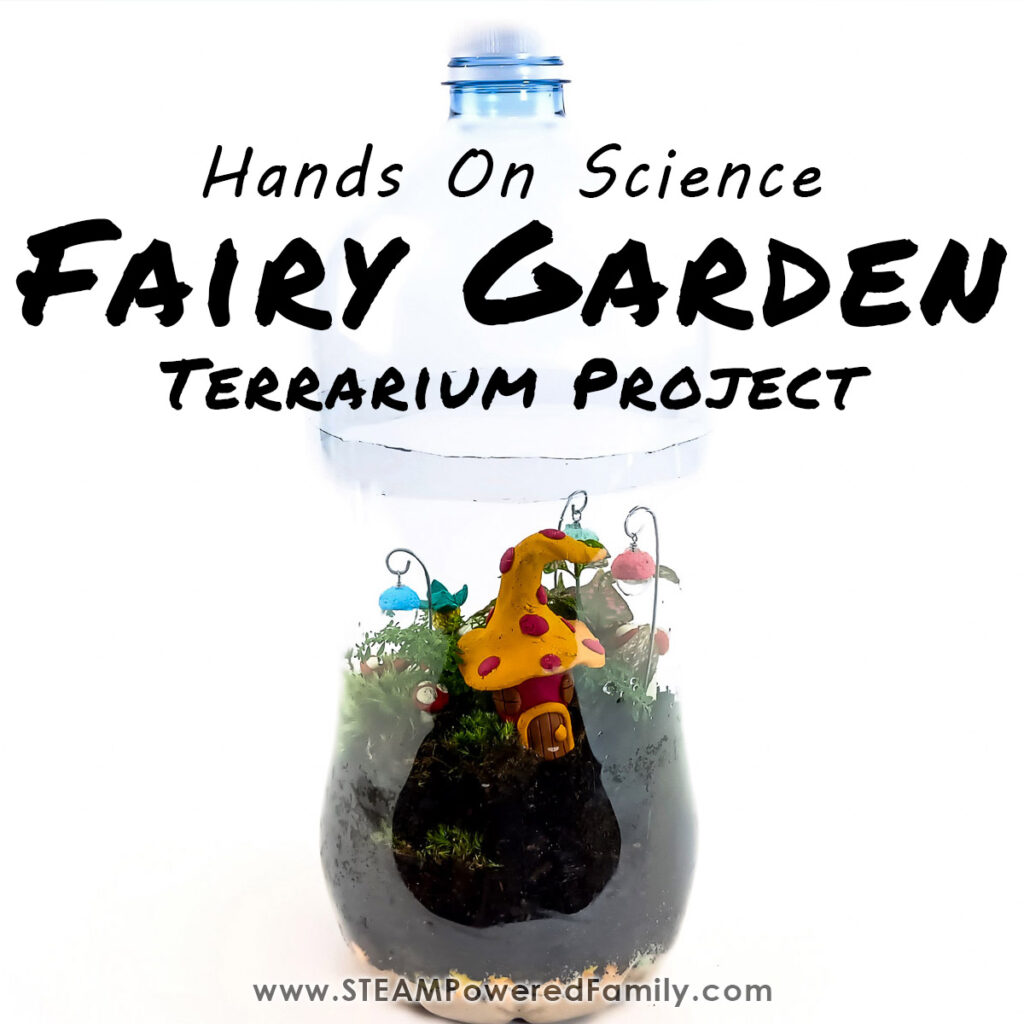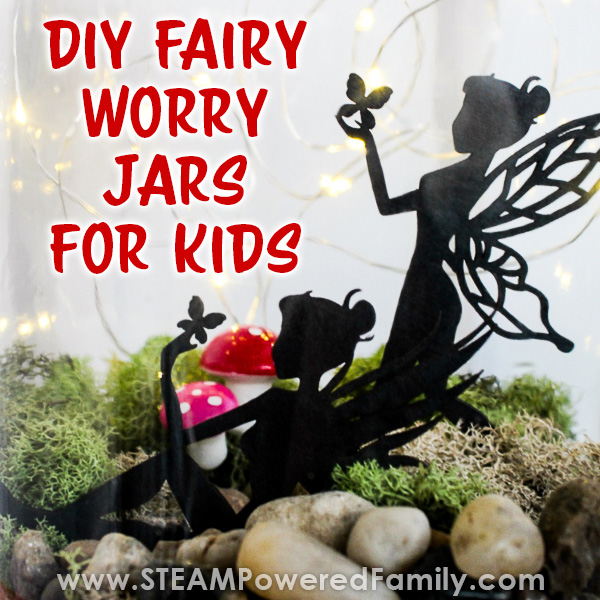Summer Solstice Activities for Kids
The days are getting longer, the sun is getting warmer and soon it will officially be summer! Kids love summer and some of our best memories are of those sun filled days with friends and family. Learn more about Summer Solstice and explore all the best Summer Solstice Activity ideas for kids!
What is Summer Solstice?
Disclaimer: This article may contain commission or affiliate links. As an Amazon Influencer I earn from qualifying purchases.
Not seeing our videos? Turn off any adblockers to ensure our video feed can be seen. Or visit our YouTube channel to see if the video has been uploaded there. We are slowly uploading our archives. Thanks!
I love summer. Living so far North we really feel all the seasons here. Our winters are very, very long and cold, and our summers feel impossibly short and precious. The solstices in particular are really prominent days for us. The Summer Solstice in particular is extra special. We get over 17 hours of sunlight on the Summer Solstice and a few more hours North of here the sun doesn’t even set on the Solstice.
Growing up with such pronounced variations in our sunlight during the year, fostered a deep curiosity and fascination for me. So let’s dig in more and learn about the Summer Solstice.
What is Summer Solstice?
Let’s tackle the big question of the day, what is the Summer Solstice?
The Summer Solstice is an astronomical event that occurs once a year, usually around June 20 – 22 in the Northern Hemisphere and around December 20 – 22 in the Southern Hemisphere. It marks the official first day of summer and is the longest day of the year (which of course means it is also the shortest night).
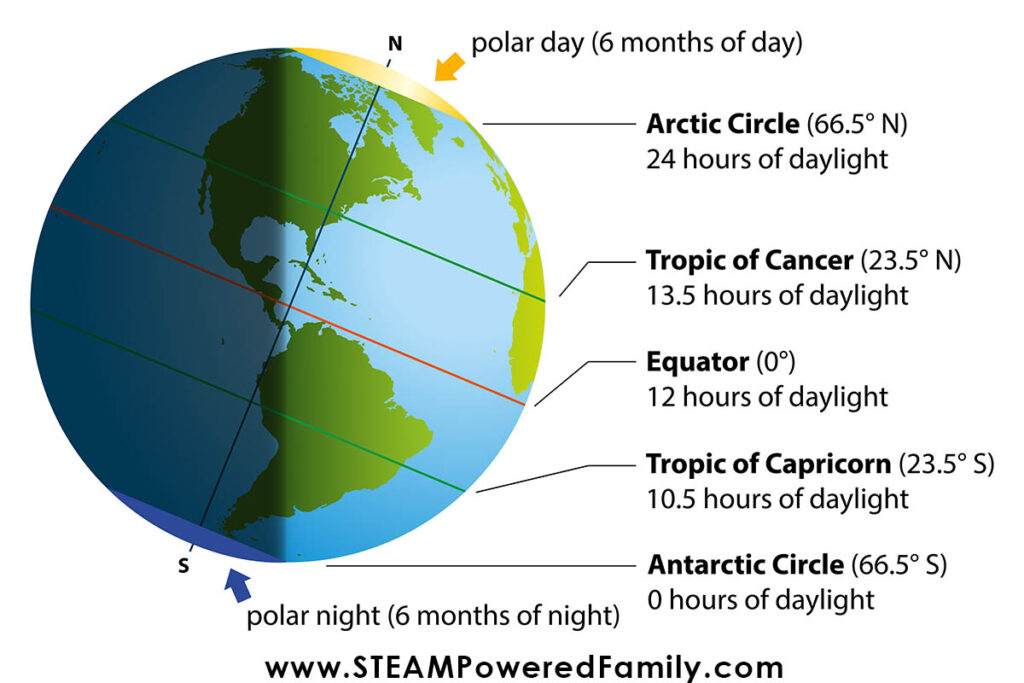
During the summer solstice, the Sun reaches its highest position in the sky, appearing to be at its highest point at noon. This happens because the Earth’s axis is tilted with respect to its orbit around the Sun. The tilt causes different parts of the Earth to receive varying amounts of sunlight throughout the year, leading to the changing seasons. This is why the length of the day (number of daylight hours) varies so much more the farther North or South you go from the Equator.
In June, on the Solstice, the Northern Hemisphere is tilted towards the Sun as much as it can and is the furthest from the celestial equator, and the Southern Hemisphere is tilted as far away from the sun as it can be. This means those in the Northern Hemisphere celebrate Summer and the Southern Hemisphere celebrate Winter. This tilt results in the longest day of the year for those in the North and shortest day for those in the South. In December the opposite is true.
The Four Seasons
In between each of these cycles of the Earth’s tilt it hits a balance point when the Sun passes the celestial equator, we call these the Equinoxes. We have a Spring Equinox in March and an Autumn or Fall Equinox in September. With the equinoxes and solstices we have the 4 seasons of the year.
So cool, right?
When is the Summer Solstice?
The exact time of the Solstice varies a bit every year. Let’s explore why this happens.
The orbit of the Earth around the sun is not a perfect circle it is actually an elliptical orbit. On top of this, the Earth is tilted. This axial tilt combined with the orbit of the Earth around the sun causes a little bit of variability in the exact moment of the Summer Solstice.
Scientists use very precise tools to measure the exact moment of the Solstice, when the Earth is at maximum tilt and will start tilting back the other way. For most people though, they celebrate the Solstice for the entire day that it lands on each year.
As mentioned above the Summer Solstice falls between June 20 and June 23 in the Northern Hemisphere, and between December 20 and December 23 in the Southern Hemisphere. What you might notice is that when one hemisphere is having the Summer Solstice the other hemisphere is celebrating the Winter Solstice and the shortest day of the year.
What does Solstice mean?
If you are word geeks like me, you might be fascinated to know the origins of the word Solstice. It is derived from the Latin words “sol” meaning “sun” and “sistere” meaning “to stand still.” When combined, “solstice” literally means “sun stands still.”
This is such a great descriptive word for this astronomical event, because during the solstice the Sun’s path across the sky reaches its highest point (for Summer) or lowest point (for Winter) and then seems to pause or stand still for a short time before reversing its direction. This pause gives the impression that the Sun is stationary before it begins its seasonal journey in the opposite direction.
What are Other Names for Summer Solstice?
Summer Solstice has many different names around the world and across different cultures. Here are a few of those names:
Midsummer
In many European countries, including Sweden, Norway, Finland, and the United Kingdom, the summer solstice is often referred to as Midsummer. This name stems from the fact that the solstice occurs around the middle of the summer season and is marked by many midsummer festivals.
Litha
Litha is an ancient pagan term used to describe the summer solstice in the Wiccan and pagan traditions. It is derived from Old English and is associated with the celebration of the longest day of the year.
Sommersonnenwende or Johannisnacht
In Germany, the summer solstice is commonly known as “Sommersonnenwende” or “Johannisnacht.” “Sommersonnenwende” translates to “summer sun turning point” and is a direct reference to the solstice, marking the turning point when the Sun reaches its highest position in the sky. “Johannisnacht” refers to “St. John’s Night”.
St. John’s Day
In Christian tradition, the summer solstice is sometimes referred to as St. John’s Day, as it falls near the feast day of St. John the Baptist, which is celebrated on June 24th.
Alban Hefin
This name is used in Welsh folklore and Druidic traditions to describe the summer solstice. It translates to “the light of summer” in English.
Sumarsólstöður
In Iceland, the summer solstice is commonly known as “sumarsólstöður” in the Icelandic language. “Sumar” means “summer,” and “sólstöður” translates to “sun’s standstill” or “sunset.” Due to it’s high latitude, the Sun can stay above the horizon for almost 24 hours in Iceland during the Summer Solstice, leading to the phenomenon known as the Midnight Sun.
Kupala Night or Ivana Kupala
In Ukraine, the summer solstice is known as “Kupala Night” or “Ivana Kupala.” Kupala Night is an ancient holiday that is widely celebrated in Ukraine and other Slavic countries.
Spiritual Meaning of Summer Solstice
The Summer Solstice has been celebrated by cultures around the world and throughout history. Ancient monuments were built in honour of this special day.
I have been very lucky to visit some of these monuments including Stonehenge in England and the Pyramid of Chichen Itza in Mexico.
Other ancient monuments linked to the Solstice include:
- The Temple of Karnak, Luxor (formerly known as the Temple of Amun in Thebes),
- Temple of the Sun at Machu Picchu, Peru,
- Mnajdra Temple, Malta.
Although scientists and historians continue to research and learn more about these incredible sites, it is believed they served as celestial observatories and sacred sites to mark the changing seasons.
How to Celebrate Summer Solstice
Here are a few simple ways you can celebrate the Summer Solstice with your friends and family or classmates.
- Go on a hike and enjoy the long day of sunlight and connect with nature.
- Head to a beautiful park or the school yard and have a picnic or BBQ.
- Go bird watching and see how many different types of birds you can find in your neighbourhood.
- Have a bonfire and roast some marshmallows or make s’mores. Bonfires are an ancient tradition during solstice celebrations.
- Watch the sunrise and sunset together. Bring in a little bit of math and have kids calculate how many hours and minutes you get of sun on Summer Solstice.
- Attend summer solstice celebrations in your community, or if possible, attend one of the large celebrations at an ancient monument.
Summer Solstice Activities
Want a printable pack on the Summer Solstice? Check out the STEAM Powered Family Shop!
Looking for something hands on? We have lots of ideas for Summer Solstice Activities with the kids including Arts, STEM Projects and Science Experiments.
Solstice Science Experiment
This is a great Solstice science experiment that demonstrates tilt and why we have the changing seasons. A simple experiment, but teaches a great lesson.
Build a Lego Stonehenge Replica
The team at Stonehenge did this special project where they had kids all come in and work together to build a Lego replica of Stonehenge. Why not make one yourself at home? You can also watch a live stream of the Solstice at Stonehenge.
Make a Bioplastic Suncatcher
What better way to celebrate our longest day of the year with the sun, than to make a suncatcher! Our suncatcher is made from bioplastics, so not only is it made with some really cool science, it is also safe for our planet. The colours from these are just beautiful!
Make a Flower Crown
A traditional activity to celebrate the solstice is to make a crown out of flowers. This is a beautiful and fun activity for kids to do. Simply harvest some local flowers, preferably with long stalks or stems, then weave the stems to form a circle with the flowers out. You can also make one with ribbon flowers.
Build a Bird Feeder STEM Project
Connecting with nature is a big part of celebrating the longest day of the year. Why not build a Bird Feeder and invite nature into your yard.
Design a Fairy Garden
I was obsessed with fairies as a kid! So building a fairy garden terrarium is something I love to do even today. You can take a pot and fill it with special things for fairies like rocks, flowers, little homes made out of craft sticks, etc. We made ours with simple supplies and recycled materials.
Or, you can make a little Fairy Jar.
Create Sun Art – Summer Solstice Art
Did you know you can use the sun’s energy to make art? The process is called Cyanotype and it is really, really cool and so simple!
Sun Melted Crayon Art
This is a great project to do for solstice. All you need for this Sun Melted Crayon Art Project is rocks, crayons, the Sun and creativity to create some beautiful artwork on the Solstice!
Play with Sunflower Playdough
Sunflowers are often associated with the Summer Solstice. We have a homemade Sunflower Playdough recipe and invitation to play that is perfect for little ones.
Wishing you a wonderful Summer Solstice filled with memory making activities with family and friends!


